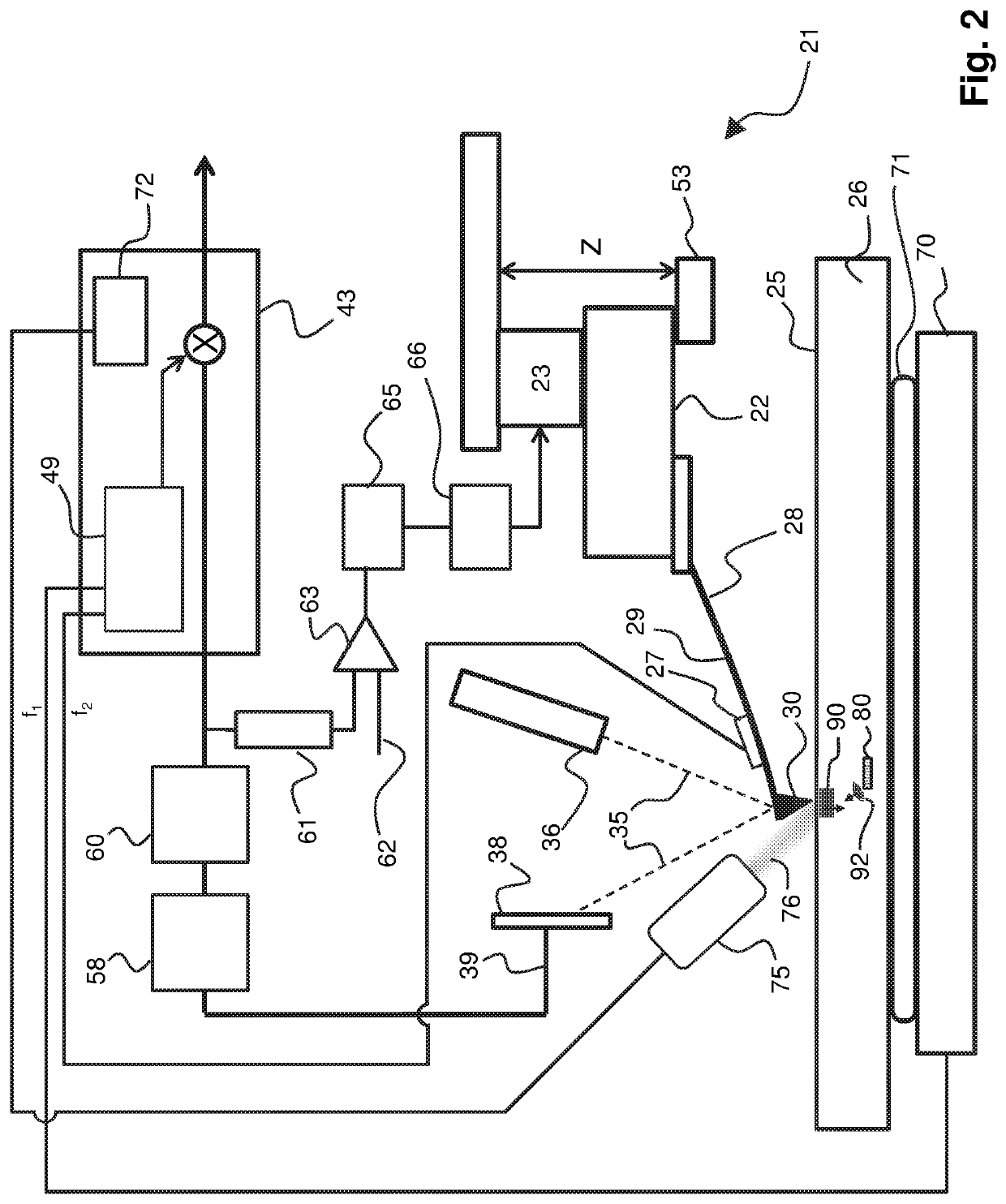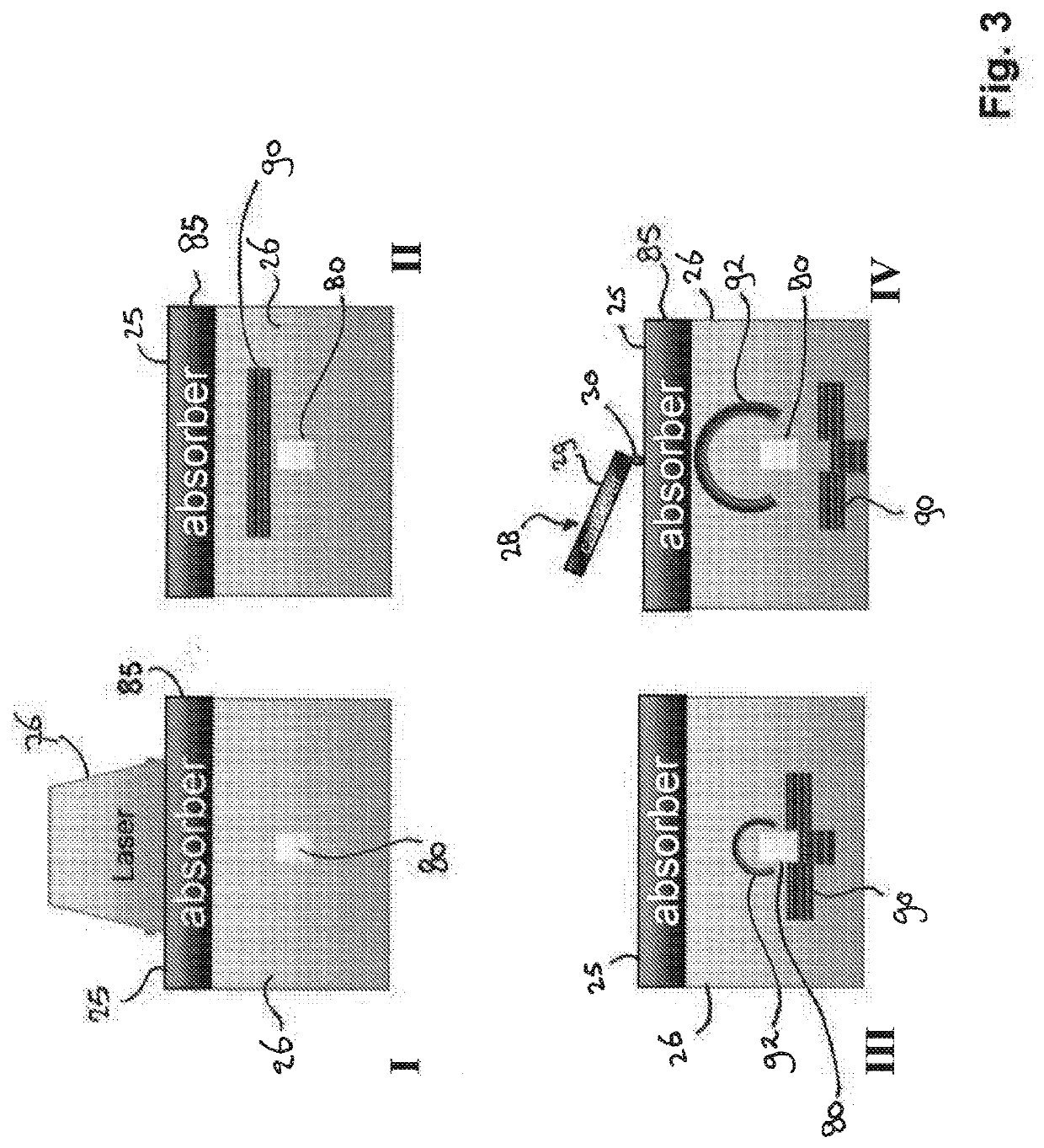Method of and system for performing subsurface imaging using vibration sensing
a technology of vibration sensing and subsurface imaging, applied in the direction of scanning probe techniques, instruments, using reradiation, etc., can solve the problems of poor detection, high cost of depth resolution, and significantly more complex interpretation of images, so as to prevent overheating and subsequent thermal damage of the transducer, the effect of increasing the operation voltag
- Summary
- Abstract
- Description
- Claims
- Application Information
AI Technical Summary
Benefits of technology
Problems solved by technology
Method used
Image
Examples
Embodiment Construction
[0020]FIG. 1 schematically illustrates a measurement system 20 in accordance with an embodiment of the invention. The system 20 may be applied for performing a method in accordance with the present invention, for example the method in accordance with the embodiment illustrated in FIG. 3 amongst others. In the system 20, a probe 28 is attached to a scan head 22. The scan head 22 enables scanning of the probe 28 relative to the surface 25 of a sample 26. The probe 28 consists of a cantilever 29 and a probe tip 30. During scanning, the probe tip 30 is brought in contact with the surface 25 of the sample 26. For example the probe tip 30 may be scanned across the surface 25 of the sample 26 in contact mode (continuous contact between the probe tip 30 and the surface 25 of the sample 26). A laser unit 36 provides a collimated laser beam 35 that impinges on the cantilever 29 and reflects towards an optical detector 38 (e.g. photo diode). Using the optical detector 38, vibrations in the can...
PUM
| Property | Measurement | Unit |
|---|---|---|
| frequency | aaaaa | aaaaa |
| depths | aaaaa | aaaaa |
| frequency | aaaaa | aaaaa |
Abstract
Description
Claims
Application Information
 Login to View More
Login to View More - R&D
- Intellectual Property
- Life Sciences
- Materials
- Tech Scout
- Unparalleled Data Quality
- Higher Quality Content
- 60% Fewer Hallucinations
Browse by: Latest US Patents, China's latest patents, Technical Efficacy Thesaurus, Application Domain, Technology Topic, Popular Technical Reports.
© 2025 PatSnap. All rights reserved.Legal|Privacy policy|Modern Slavery Act Transparency Statement|Sitemap|About US| Contact US: help@patsnap.com



